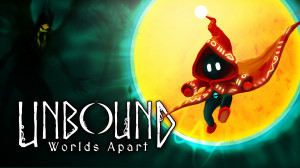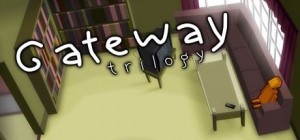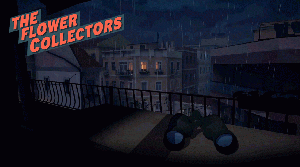Gamescom 2020 round-up: Part 1
Events Coverage
Reporting from E3, GDC, AdventureX, Gamescom and other gaming events around the world

With the annual gamescom event in Cologne getting ever more crowded each year, the Indie Arena Booth had become not just a staple but a bit of a safe haven to me when I was between appointments and had already walked all the halls. It's all relative, of course, but it was a bit less noisy there, a bit less crowded, and while there were still lines, the wait times were much shorter. This year, with the entire event taking place online, there were no lines to worry about and surprisingly there was just as much to look at and play first-hand as ever.
The isometric multi-user online show floor was difficult to navigate without using the search function, but really that's much the same experience as trying to find a small booth in the many halls of a normal gamescom, just without tiring yourself out walking everywhere in between. Here just a few mouse-clicks were needed to access more than 200 different games, over two dozen of them adventures. Most of them had demos to check out, so it’s a good thing I had several colleagues to help share the load. So read on as we begin our two-part coverage of a gamescom like no other.
Transient
Coming from the same developers who made Conarium, the demo for Transient wasted no time in getting to the deep end of Lovecraftian ambiance, as a partially bandage-wrapped Randolph Carter awakens in an ancient pre-human city with only his immediate vicinity having any recognizable modern technology. (Of course the name Randolph Carter itself is lifted from the main character of several of H.P. Lovecraft's original stories.) The beautifully rendered 3D environment and ominous decor set the right tone, though the sheer number of statuettes and tentacle-ornaments is perhaps a bit over the top.
Likewise, while the themes and alien designs make sense for a Lovecraft story, it is a bit excessive just how much outré metaphysical discussion Randolph hears and uncritically digests from the other characters around him – first a glowing orb and a bit later an alien you temporarily bring to life by operating a strange mechanism. The fact that Randolph has a case of amnesia so bad that he doesn't remember having spoken to either of them many times before can make this feel better or worse.
When he makes his way through a cave to a mysterious door, Randolph finally sees something he recognizes: a woman named Alice. As he chases her we finally get to see some of the cyberpunk setting in which this game takes place, arriving in a dark back alley with neon lighting and digital advertisements. We don't get to enjoy the aesthetic for long just yet, though, as the chase goes on through a puzzle-locked door (with a snake motif matching one seen earlier), down many stairwells, and into a sewer entrance.
It's only here that we first learn that Randolph has cybernetic implants, which can potentially glitch out to briefly mess with your vision. They're quickly put to use for some investigative gameplay, where they help you discover the cause of death of a nearby investigator and hack into an ancient-looking technological device that opens a door forward. The game then goes full-on horror again after that: the tunnel that opens up is infested with tentacles along its walls, and you'll pass some sci-fi lifepods filled with vaguely Lovecraftian aliens in a scene that could have been a dramatic reveal near the end of a story but is treated more as a nice view on the side here. The demo ends with a bunch of the tentacles pulling Alice through a strange portal.
With ambitions high and a lot of evident skill, the only thing I could fault the Transient demo for was tossing in too much at once to the point of feeling pulpy. It's certainly able to create a great atmosphere with beautiful environments and well-designed set pieces, but in traditional Lovecraftian storytelling you would expect a slow build-up and more moderation. But perhaps the full game will introduce its elements more gradually and the developers just wanted to make sure players would see enough of the good stuff in the demo. At any rate, there should be plenty to enjoy when Transient comes out for PC this October.
Lucifer Within Us
Science and religion aren't always on the best terms in the real world, but Kitfox Games' Lucifer Within Us shows us a fascinating alternative, being set in a religious environment where the church wholeheartedly embraces sci-fi technology including cybernetics, and where AI "daemons" lurk and can engage in old-fashion possession of humans. The 3D environments where this all takes place are rendered a bit simplistically, but they are nicely designed and complemented by great stylized 2D portraits and interface pictures.
In this world, Sister Ada is strictly speaking a "digital exorcist," but in practice more of a murder investigator. In the circles in which she moves, murder and possession seem to always go hand in hand, and only after the truth is revealed will a daemon expose itself and be vulnerable. In the demo's tutorial, we see her as she takes on the first case of possession in a hundred years, but what will go on to become the first of many. The case takes place in a cybernetics lab handily showing off the mix of tech and religion. To enhance the effectiveness of a ritual, the "Aether level" of Mother Miriam was cybernetically boosted, but someone pushed this process well beyond the normal safety limits and it overdosed to the point of making her head explode. The cybernetic engineer brothers Gideon and Reuben were the only ones nearby at the time, and neither seemed psychologically capable of murder beforehand.
As you talk to the suspects, they testify to what they did around the time of the murder, and you can ask for details about their various statements or argue that some contradict your evidence, which can lead to statements being amended or split into multiple parts. This much will sound quite familiar to fans of games like the Ace Attorney series, but the accompanying mechanics are substantially more advanced. You can see the entire testimony at a glance along the bottom of the screen and skip through it easily. While checking testimony, the main screen you move around in is replaced with a visual reconstruction that can give hints to inconsistencies and openings (such as when Gideon suddenly pops into existence in a later statement when Reuben forgot to mention his presence at the start). Most importantly, all the testimonies are aligned alongside one another and you can ask a suspect about any statement made by a different suspect and present contradicting testimonies in the same way as evidence.
These comparison mechanics also make your investigations less linear, as you do not have to wring everything you can out of one suspect before you can move on to the next. In this way, the developer tries to ensure that getting to the end "will require true understanding of the case, not just following the story." In line with this, you can at any time accuse someone of having committed the murder, if you can put together the right combination of evidence. The daemon will conveniently force the possessed to confess if the whole truth is revealed, so there is no real penalty for being wrong. Indeed, making a wrong accusation that is still backed with a sufficiently strong argument can be a good thing, as it can cause a suspect to reveal more information to exonerate themselves.
The demo did leave out the juicy part where after a correct accusation you have to then identify which daemon is possessing them to complete the exorcism, stopping just after I had arrived at what was presumably the right answer. The actual exorcisms will have to wait until the game comes out for PC on October 15th.
Hazel Sky
While the trailer for Coffee Addict Studio's upcoming Hazel Sky didn't leave me sure it was even going to be an adventure game at first, the demo certainly showed signs of an intriguing story. As apprentice Shane Casey is brought to a small island to prove his worth to the engineers that run the flying city of Gideon, the narrator tells us that there have been power struggles here and the engineers will lose control soon. Clues later on hint that the ruling class is fixated on stomping out the influence of art and has totalitarian tendencies, and then we pick up a radio broadcast in which a woman calls for imminent revolution.
The puzzles couldn't hold my attention as well as the story, though. The engineering angle should have brought interesting opportunities, but the repairs Shane is tasked to do for the first part ot the trial felt laughably minor, with the only real puzzle in my half-hour of play being one of sliding a box to a decent spot to jump to a ledge. Hopefully the actual challenges are yet to come. The game so far focuses more on creating a hands-on feel, requiring you to do things like rotating the gamepad stick to turn a key, holding down the shoulder button to carry or manipulate heavier items, and even directly controlling a plane briefly at the end of the demo.
The graphics are nice enough with sharp models and decent material textures (though not to the point of photorealism), but a bit bland in design and color choices and oddly lacking detail on the main character. I also could have done without the glare from the sun in my eye whenever it's anywhere in sight. Similarly, the voice acting is decent enough overall but doesn't feel very invested, and Shane's voice becomes grating at times.
Hazel Sky is set to come out for PC, PS4, Xbox One and Switch later this year.
Cyanide & Happiness: Freakpocalypse – Part 1: Hall Pass to Hell
by Melanie Blagg
The snappily-titled Freakpocalypse – Part 1: Hall Pass to Hell demo offers the opportunity to step right into a Cyanide & Happiness animated short and treat yourself to a slice of the webcomic’s trademark adult humour. You play as Coop, a student at Netherton High School who needs to find a “Holly Pass” – his ticket to freedom. The demo is fairly limited in terms of story, although there are hints as to what might be to come, like acquiring a consent form for an epic field trip to the local bomb shelter. It’s probably not called ‘Freakpocalypse’ for nothing.
This peek into the full game, developed by Explosm and Skeleton Crew Studios, is mainly confined to a handful of areas in Netherton High, but it’s absolutely packed with the same sort of wit you’d see in a Cyanide & Happiness comic. Characters to chat with include Ian Conclusive, Walter Fountain, and Peeter Tinklage (guess what’s he’s up to…), all of them fully voice-acted, and pretty skillfully too. It’s also littered with interactive items and a bucketload of puns. Even talking to the floor tiles and windows provides amusing quips (“Talking to the floor isn’t my s-tile;” “This version of Windows sucks”). It’s worth pointing out that this particular brand of humour isn’t suitable for kids – expect swearing and some fairly low-brow jokes.
The colourful stickmen graphics are crisp and clear, emulating the comics perfectly, with smooth animations from the protagonist as well as the quirky characters you’re surrounded by. In the background plays a cheery, catchy pop instrumental, almost reminiscent of a Japanese dating sim. There are other nice touches, like Zelda-style reward sounds when you pick up an item, and some disturbingly loud kissing sounds from a couple in the corridor (“Like two slugs wrestling in a bowl of chilli”).
You interact with this cartoon world in a fairly standard but intuitive way, clicking to select items and clicking again to choose how to interact with them, either by looking, touching or talking. There doesn’t appear to be a hotspot highlighter, which might have been helpful given the impressive number of items to interact with. It’d honestly be a shame to miss any of the gags. Navigating your surroundings can be done with either WASD or a simple mouse-click. There’s a notebook that handily contains your objectives and an in-built hint system, though there was no particular need to use either in the demo as it posed just a couple of simple inventory-based tasks. The real fun to be had here isn’t in the puzzles, it’s in interacting with everything around you and giggling at the juvenile jokes. In the notebook you’ll also find lists of achievements and nifty costumes which you collect as you explore. You can use the wearable items to dress up your character in-game, including a rather fetching tin foil hat.
Whilst the humour is likely not for everyone, if you’re a fan of Explosm’s comics and animations, this pun-laden point-and-click will be right up your alley. I’m looking forward to exploring it further when the first of three planned episodes is released (currently slated for summer 2020). Hopefully then we’ll find out what a ‘Freakpocalypse’ actually is.
Chicken Police
by Melanie Blagg
If you’re the kind of person who thinks Chicken Police sounds like a good title for a game, then this bizarre noir visual novel-styled adventure featuring human-animal hybrids is certainly worth a look. With the exception of a few creature-based puns, it’s more serious than silly, although it’s full of the kind of hard-boiled detective story tropes you might expect.
You are Sonny Featherland, a grizzled rooster detective at Clawville PD, currently on an extended period of paid leave; hints are dropped that this may be due to your fondness for the hard stuff. In days gone by, you and your partner Marty MacChicken were quite the crime-solving duo, until a mysterious event the papers called ‘The Bloody New Year’ rocked you both to the core. Years have now passed and fate intervenes, pushing you both to team up again on New Year’s Eve to investigate some fowl play. . . . In this demo snippet from the game, your goal is to track down Debra the impala’s boss, Natasha. Natasha is a sultry feline dame who owns the nearby Czar club, and she’s been receiving some nasty threats. Time to start piecing together the clues.
Developer The Wild Gentlemen delivers photorealistic graphics that are both absurd and beautiful, maintaining the noir style with a black-and-white film look but with the odd splash of colour thrown in. Occasional animated cutscenes with artful cinematography help tell the tale and build the intrigue. The characters we meet are constantly in motion, swaying to and fro, beaks and muzzles moving as they speak. Unfortunately the background itself also seems to be constantly moving back and forth slightly, which could make some feel a little queasy. The visuals are accompanied by authentic-sounding crime jazz tunes and fitting background ambience, whether it’s the hubbub of the police department or the bustle of the city.
Our leather-clad avian hero has a superbly gritty-sounding voice – in fact, all of the characters are fully voice-acted. Even just in the demo we meet quite the menagerie of characters, from the titular chickens to a porcupine, a rabbit and a gangster rat. The rabbit sounds as jumpy as you’d expect a bunny to, and the Komodo dragon is sssuitably sssibilant.
The interface feels like a combination of point-and-click and visual novel mechanics. You view the scenes from a fixed first-person perspective, but with the ability to pan the camera slightly left or right. There is an inventory, although it didn’t seem to be actively used in the demo. Most of the gameplay focuses on hotspot examination and verbal interaction with the characters; clicking on a creature brings up a wheel with a number of options to try. ‘Speak’ opens up the conversation; ‘ask’ provides a list of topics to choose from; and ‘question’ is a specific interrogation mechanic. The goal of the latter is to carefully choose your queries based on what you know, increasing your ‘detective meter’ score and ultimately allowing you to crack the witness like a rotten egg. This slice of the game only allowed the opportunity to dip my toe into this system, however, hurling just a few questions at one character.
Although literally shaky in places, Chicken Police’s quirky characters, striking noir visuals and original jazz music are a compelling combo, making it definitely one to watch when it’s released for PC (release date still TBA).
A Juggler's Tale
by Matt Aukamp
A Juggler's Tale is a cute 3D side-scrolling game in which you play as Abby, a young marionette girl held captive by a circus and forced to perform. That is, until you make your daring escape. In the short ten-minute demo, that's the scene being played out. A breezy tutorial teaches you to play and sets up the story, followed by a bit of puzzle-platforming to help Abby escape from her cage into the wide open world.
The aesthetic, which gives me a pretty strong Coraline vibe, centers around the theme of marionette theater. All the characters have strings extending from each limb up into the sky. In truth, this can be a little distracting as the beautiful scenery is constantly obscured by dozens of white threads. The backgrounds are a combination of 3D models meant to look like wooden sets and 2D scenery painted on bits of wood or cardboard placed in the world. It's really effective, if still in need of a bit of smoothing. I ran into a few graphical hiccups like pixelated edges, character models folding in unexpected ways and the camera clipping through walls, but with the game not set to be released until sometime next year, they have plenty of time to sand things down.
The gameplay on display so far is fairly basic, if you have any familiarity with the genre. I found it strongly reminiscent of games like LIMBO or INSIDE. The demo showed off Abby's ability to run, jump, push and pull crates, throw objects, swing on vines, and interact with other characters, which all felt pretty familiar but worked well. The game supports keyboard or controller and features directional buttons, a jump button, and an “interact” button. The one innovation I saw came late in the demo when Abby was prevented from moving forward due to her strings catching on an object in the air, creating an obstacle to overcome. This was the most exciting part of the short experience, gameplay-wise, and made me hope for more of that in the full game.
The one sticking point, unfortunately, is the writing. A narrator with a voice full of character accompanies you throughout your journey and while he's pleasant enough to listen to, his dialogue seems to be suffering from translation issues. The narration is largely structured in rhyming couplets, but the rhymes are often poor and the script forced to contort to make this scheme work. At times, the rhyme scheme drops entirely for seemingly no reason. There were several times the narrator said something so weird or absurd it pulled me out of the game, like when he called me a “little laboratory.” One can only hope developer kaleidoscube has plans to tighten this up as well before the full game is released.
Though still clearly a work in progress, A Juggler's Tale shows a lot of potential with a lovely aesthetic, a tried-and-true set of mechanics, and buckets of charm. With some more spit and polish, I think this game could be something really special.
Unbound: Worlds Apart
by Matt Aukamp
I'm really quite fond of this new trend of puzzle-platformer with stylish settings and adorable little heroes. While they don't exactly fit the bill of traditional “adventure games,” I'm always delighted to see one that's done well. Alien Pixel Studios’ Unbound: Worlds Apart appears to be one that's done exceptionally well.
The demo, which calls itself a prologue, starts you off in a mystical-looking forest village, stylishly presented in a side-scrolling, hand-painted art style. You're a little red-robed monk creature named Soli with a tiny flame dancing on your head, hopping around to the sounds of birds and crickets and soft ambient background tones. An elder sends you off to find your brother to begin some unnamed ceremony when disaster strikes. A portal to a darker world opens up, unleashing fire and destruction and releasing abominations into your world. The rest of this intro section sets you off on a quest to find two lost artifacts that the remnants of your tribe need to open another gateway to this darker world.
Soli is able to run, jump and push blocks around, but the true magic of this game lies in a device that grants you the ability to open a localized portal to this other world at will. Rather than transporting you there, this portal transports a circular pocket of that world to you. Centered on Soli, the portal changes the environment from the mystical forests and caves of Soli's world to the jagged rocks and fiery hellscapes of the other world, while the rest of your world remains untouched around you. The layouts are roughly the same but key details are changed. You may see water in one world and a walkable surface in the other. You may see a platform in one world and a chasm in the other. The crux of the gameplay is in switching strategically between the two worlds to overcome obstacles. Toggling the portal is mapped to a trigger button for ease of use, as you may need to enable it more than once during a jump or quickly as a monster approaches.
The portal appears to be incredibly versatile in altering your surroundings in different ways. As you pass through certain gateways, the mechanics change. In one, every time you switch on the portal, the gravity flips and you fall upwards toward the ceiling. In another, the area is pitch black and the portal triggers automatically every time you stop moving, revealing a circle of light to show your environment rendered in stark black-and-white. I am incredibly excited to see what other variations the full game will have in store.
There appears to be no combat in the Unbound, at least none that was represented in this demo. Soli has no attacks or weapons, but instead uses the environment to defeat or overcome enemies. These little puzzles can require some dexterity and quick thinking, but there really isn't much of a penalty for dying, so you can try over and over again. There are autosave checkpoints all over the place, and I never felt frustrated by missing a jump or being gobbled up by a spider as I'd respawn instantaneously seconds before the spot where I died.
There are even some secrets hidden about, as other surviving members of your tribe are scattered around the map for you to find. And the game affords you an easy-to-navigate map of the world with fast travel options, which makes traversing large areas simple and unobtrusive.
It's hard to convey the depth of such games in a short twenty-minute demo, but Unbound: Worlds Apart has no problem showing that there's plenty under the surface. I was incredibly impressed and found myself hopping right back in for another go when the prologue was over. I was also pleasantly surprised to discover that, in addition to releasing on Steam in 2021, the game is being developed for the Nintendo Switch as well. This looks to be a perfect little game to nestle up on the couch with. A game like this may require a lot of finesse and skill that may not be suitable for all adventure game fans, but the charm and wonder of the genre is definitely present here. With its stylish design and clever gameplay ideas, this is one I'm definitely looking forward to.
Omno
by Evan Dickens
No one’s going to argue that it’s a stressful world we’re living in right now, and if your desire is to take a momentary break from the anxiety of the real world and its painful news cycle, a peaceful 3D platformer like Omno might be just what you’re looking for. Independently developed by German one-man studio Inkyfox, this is a third-person action-adventure whose brief demo shows a beautiful world of serene exploration.
The section featured in the demo is a lovely outdoor forest landscape with lush, tall grass, a gorgeous sunlit sky, and a variety of adorable creatures running around. Your character is a humanoid with an almost featureless onion-shaped head and two bright glowing eyes, carrying a staff that gives you powers of energy that you’ll use to move around the world. You control your character with either a gamepad or standard mouse and WASD combination. After a quick tutorial for the basic movements and some exploration to collect energy and activate the monument in the center of the level, you then add an air-dash (using left-mouse) and learn how to use your staff to transfer energy from one receptacle to another in order to activate a portal.
Why are you doing these things? There’s no real idea at this point and the demo ends after only a couple of portals, but it’s both a soothing and invigorating experience, with the Unreal Engine used to incredible effect in animating the scenery and the character movements. The most important aspect of the experience, though, is the beautiful and peaceful ambient music, a new-age-inspired soundtrack that frames the entire experience as a valley of calm. You may miss your jump a few times as you adjust to the length of the air-dash, but how can you be upset about that in the midst of this stunning world with this relaxing music?
Making and missing your jumps, as well as some gentle exploring of the environment, is about all there is here—no other characters to interact with, other than the fireflies that you gather energy from, and no real puzzles of note so far, though the game does bill itself as a “3D puzzle platformer” so there will likely be more complexity in the final release.
The demo only took me about 15 minutes to play through, during which time it was absent any story or background character information, so it remains to be seen if the final game will focus more on these elements, or if it will continue to allow the moment-to-moment experience to take precedence over narrative. Whether it reveals itself to be more adventure or platformer, Omno at least will provide a tranquil place to enjoy in the midst of a world that is anything but.


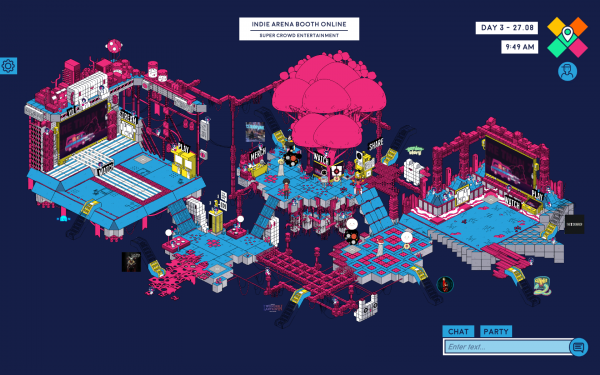
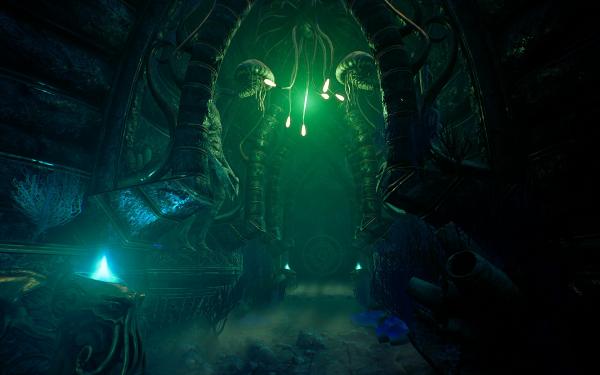
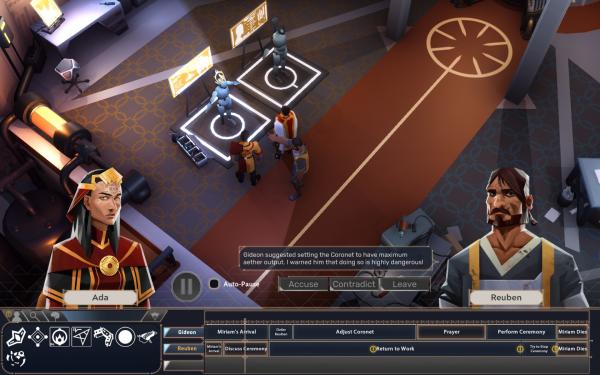
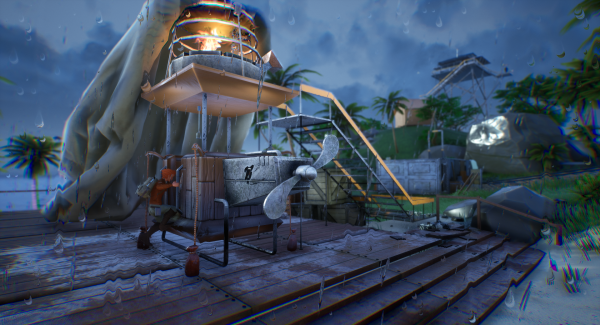
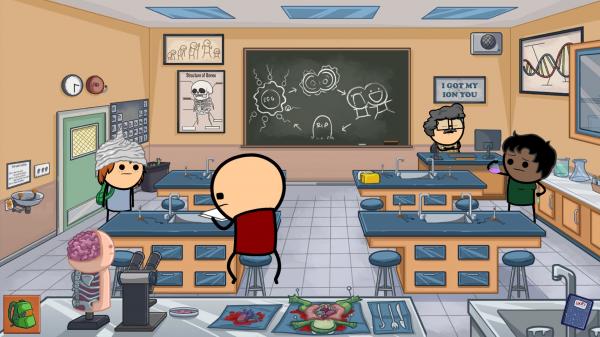

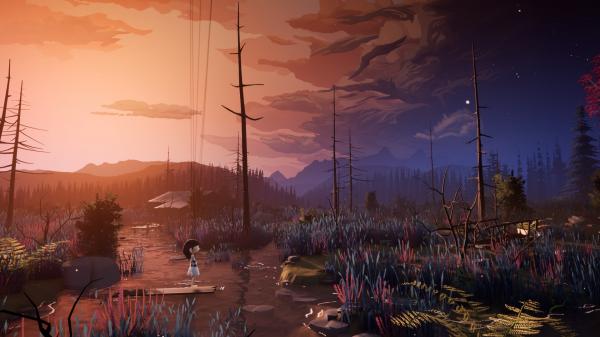
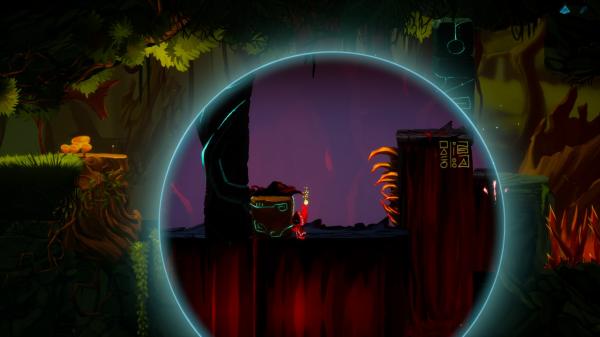
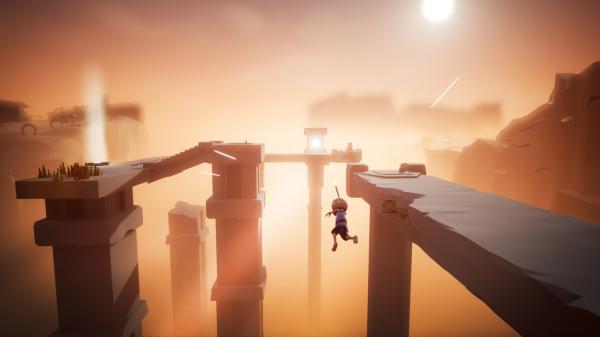

__medium.jpg)






